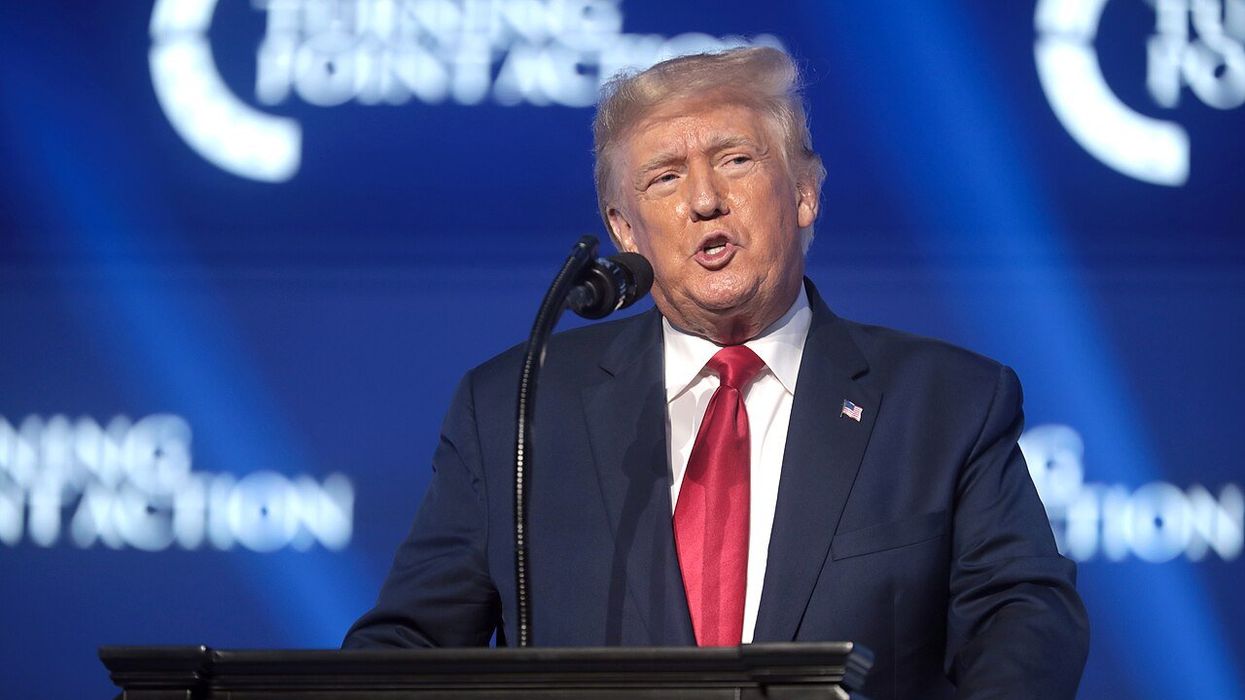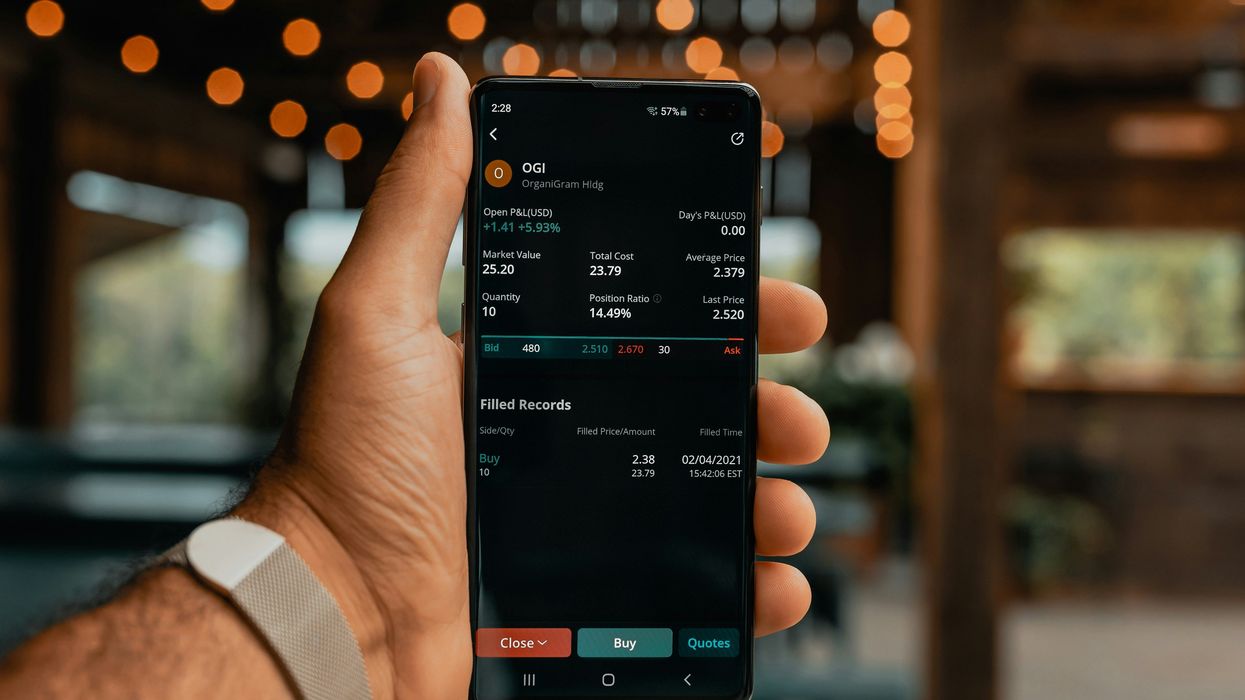Bloomberg editorial: Trump’s 'puzzling economic agenda' will make inflation even worse

Former President Donald Trump in Tampa, Florida in July 2022 (Gage Skidmore)

Former President Donald Trump in Tampa, Florida in July 2022 (Gage Skidmore)
May 15, 2024
ALTERNET
While facing four criminal indictments, presumptive 2024 GOP presidential nominee Donald Trump has been aggressively campaigning on the economy — especially inflation, which he is blaming incumbent President Joe Biden for. And that messaging may be working: some polls released in May have found Trump with narrow single-digit leads, while others show Biden slightly ahead.
Recent polls in swing states, especially those in the Sun Belt, are showing Trump with an advantage.
But in an editorial published on May 14, Bloomberg News' editorial board warns that Trump's proposals would be terrible for the U.S. economy if he returns to the White House in January 2025.
READ MORE:'Econ 101': Here’s what Trump gets painfully wrong about inflation
"Whoever wins November's election," Bloomberg's editorial board argues, "inflation will present them with an immediate challenge…. It's a bit puzzling, then, that former President Donald Trump's economic agenda seems to be dedicated to raising prices."
Trump's proposals, the editorial board notes, include "tariffs of 60 percent on Chinese-made products and 10 percent on other imports" as well as "devaluing" the U.S. dollar. And Trump has toyed with the idea of a hands-on policy with the U.S. Federal Reserve.
All of this, according to the editorial, is a recipe for increasing "the cost of imported goods and inputs for domestic producers."
"Some caveats are in order," Bloomberg's editorial board explains. "Trump doesn’t always mean what he says…. But what do you get, all else equal, when you add much higher tariffs, a politicized central bank, a deliberately weakened currency and an enormous surge in public borrowing, at a time of already-elevated inflation? It would be best to not find out."
READ MORE: 'Disastrous consequences': Columnist warns this 'destructive' Trump plan could tank economy
While facing four criminal indictments, presumptive 2024 GOP presidential nominee Donald Trump has been aggressively campaigning on the economy — especially inflation, which he is blaming incumbent President Joe Biden for. And that messaging may be working: some polls released in May have found Trump with narrow single-digit leads, while others show Biden slightly ahead.
Recent polls in swing states, especially those in the Sun Belt, are showing Trump with an advantage.
But in an editorial published on May 14, Bloomberg News' editorial board warns that Trump's proposals would be terrible for the U.S. economy if he returns to the White House in January 2025.
READ MORE:'Econ 101': Here’s what Trump gets painfully wrong about inflation
"Whoever wins November's election," Bloomberg's editorial board argues, "inflation will present them with an immediate challenge…. It's a bit puzzling, then, that former President Donald Trump's economic agenda seems to be dedicated to raising prices."
Trump's proposals, the editorial board notes, include "tariffs of 60 percent on Chinese-made products and 10 percent on other imports" as well as "devaluing" the U.S. dollar. And Trump has toyed with the idea of a hands-on policy with the U.S. Federal Reserve.
All of this, according to the editorial, is a recipe for increasing "the cost of imported goods and inputs for domestic producers."
"Some caveats are in order," Bloomberg's editorial board explains. "Trump doesn’t always mean what he says…. But what do you get, all else equal, when you add much higher tariffs, a politicized central bank, a deliberately weakened currency and an enormous surge in public borrowing, at a time of already-elevated inflation? It would be best to not find out."
READ MORE: 'Disastrous consequences': Columnist warns this 'destructive' Trump plan could tank economy

May 03, 2024
The Federal Reserve held interest rates steady at its May 1, 2024, policy meeting, dashing the hopes of potential homebuyers and others who were hoping for a cut. Not only will rates remain at their current level – a 23-year high – for at least another month, there’s little reason to believe the Fed will start tapering until the fall. Indeed, if inflation starts to heat back up, it’s plausible — though at the moment unlikely — that the Fed will consider ratcheting up rates another 25 basis points or so in the coming months.
As recently as a few months ago, investors were betting that 2024 would bring a slew of rate cuts.
But speaking as a business economist, I think it’s clear that the latest economic data discouraged the Fed from easing up as it gathered for its latest policy meeting. There’s no sign of an imminent recession. Employment is still pretty strong, with the U.S. adding 303,000 jobs in March 2024 and 270,000 in February, and the unemployment rate – at 3.8% in March – ticked up only slightly from 3.5% in March 2023. That is simply not a large enough increase to be concerned that high rates are slowing the economy down too abruptly.
While it’s true that inflation-adjusted gross domestic product growth, after posting a remarkable 4.8% annualized increase in the fourth quarter of 2023, slowed significantly to 1.6% in the first quarter of 2024, slower growth is exactly what the Fed has been attempting to engineer by raising interest rates. By controlling demand for good and services, price growth slows. That’s still not a recessionary indication.
The inflation challenge
Getting inflation rates down to the Fed’s 2% target — a number that Federal Reserve Chair Jerome Powell repeated several times during his news conference — has been challenging, to say the least. The Fed began hiking interest rates in early 2022. Initially, it had some success in reducing inflation that had peaked at about 9% that year. Indeed, as Powell said, the reduction in inflation was historically fast, due in part to both rate increases and easing international supply chain disruptions. But since June 2023, when inflation was 3.1%, there’s been little decline. Indeed, consumer price index growth hasn’t fallen below 3% since March 2021.
One of the main reasons inflation has stayed high is that there aren’t enough workers. Economic growth increases labor demand, and labor supply simply hasn’t kept pace. The result is higher wages. With higher wages, firms need to cut costs elsewhere, increase prices, or both, to maintain profitability.
Another important driver of inflation, which Powell took pains to mention, is the rising cost of rent. With higher mortgage rates, the housing market has slowed considerably, and many Americans — especially younger ones — are renting instead of buying. Sustained demand for apartments, combined with increased costs of maintenance and upkeep of rental properties, is pressuring rents upward.
Could hikes be in the future?
The next rate decision, in June, is “unlikely” to bring an increase, Powell said during his news conference. He also indicated said the current regime of high rates should be sufficient to tame inflation.
Indeed, as he noted, new job openings have fallen from a peak of 12.1 million in March 2022 to 8.4 million in March 2024. While that’s still high in absolute terms, it’s a significant decline, which suggests slower labor demand. This should then reduce pressure on wages.
So, what about rate cuts? After all, some observers were expecting rate cuts to begin this summer. Based on the information I’m looking at, that is simply not going to happen. No move will occur until September at the earliest. Until then, expect a sluggish housing market and costly borrowing, but moderating inflation and slow but steady growth.
Christopher Decker, Professor of Economics, University of Nebraska Omaha
This article is republished from The Conversation under a Creative Commons license. Read the original article.
The Federal Reserve held interest rates steady at its May 1, 2024, policy meeting, dashing the hopes of potential homebuyers and others who were hoping for a cut. Not only will rates remain at their current level – a 23-year high – for at least another month, there’s little reason to believe the Fed will start tapering until the fall. Indeed, if inflation starts to heat back up, it’s plausible — though at the moment unlikely — that the Fed will consider ratcheting up rates another 25 basis points or so in the coming months.
As recently as a few months ago, investors were betting that 2024 would bring a slew of rate cuts.
But speaking as a business economist, I think it’s clear that the latest economic data discouraged the Fed from easing up as it gathered for its latest policy meeting. There’s no sign of an imminent recession. Employment is still pretty strong, with the U.S. adding 303,000 jobs in March 2024 and 270,000 in February, and the unemployment rate – at 3.8% in March – ticked up only slightly from 3.5% in March 2023. That is simply not a large enough increase to be concerned that high rates are slowing the economy down too abruptly.
While it’s true that inflation-adjusted gross domestic product growth, after posting a remarkable 4.8% annualized increase in the fourth quarter of 2023, slowed significantly to 1.6% in the first quarter of 2024, slower growth is exactly what the Fed has been attempting to engineer by raising interest rates. By controlling demand for good and services, price growth slows. That’s still not a recessionary indication.
The inflation challenge
Getting inflation rates down to the Fed’s 2% target — a number that Federal Reserve Chair Jerome Powell repeated several times during his news conference — has been challenging, to say the least. The Fed began hiking interest rates in early 2022. Initially, it had some success in reducing inflation that had peaked at about 9% that year. Indeed, as Powell said, the reduction in inflation was historically fast, due in part to both rate increases and easing international supply chain disruptions. But since June 2023, when inflation was 3.1%, there’s been little decline. Indeed, consumer price index growth hasn’t fallen below 3% since March 2021.
One of the main reasons inflation has stayed high is that there aren’t enough workers. Economic growth increases labor demand, and labor supply simply hasn’t kept pace. The result is higher wages. With higher wages, firms need to cut costs elsewhere, increase prices, or both, to maintain profitability.
Another important driver of inflation, which Powell took pains to mention, is the rising cost of rent. With higher mortgage rates, the housing market has slowed considerably, and many Americans — especially younger ones — are renting instead of buying. Sustained demand for apartments, combined with increased costs of maintenance and upkeep of rental properties, is pressuring rents upward.
Could hikes be in the future?
The next rate decision, in June, is “unlikely” to bring an increase, Powell said during his news conference. He also indicated said the current regime of high rates should be sufficient to tame inflation.
Indeed, as he noted, new job openings have fallen from a peak of 12.1 million in March 2022 to 8.4 million in March 2024. While that’s still high in absolute terms, it’s a significant decline, which suggests slower labor demand. This should then reduce pressure on wages.
So, what about rate cuts? After all, some observers were expecting rate cuts to begin this summer. Based on the information I’m looking at, that is simply not going to happen. No move will occur until September at the earliest. Until then, expect a sluggish housing market and costly borrowing, but moderating inflation and slow but steady growth.

Christopher Decker, Professor of Economics, University of Nebraska Omaha
This article is republished from The Conversation under a Creative Commons license. Read the original article.

No comments:
Post a Comment